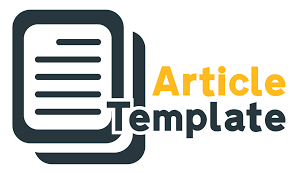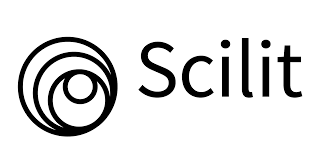Utilizing Digital Platforms for Diplomacy in ASEAN: A Preliminary Overview
DOI:
https://doi.org/10.38043/commusty.v1i1.3685Keywords:
ASEAN, Digital Diplomacy, Network Diplomacy, Non-state actor, State actorAbstract
This paper is a preliminary overview that aims to seek the general answer of who are the state and non-state actors involved in ASEAN digital diplomacy. By using the theory of network diplomacy and the concept of digital diplomacy, this paper outlines official websites and social media accounts related to ASEAN. The methodology uses in this paper is descriptive qualitative with secondary data. This paper finds that ASEAN acts as a state actor to conduct digital diplomacy by utilizing digital platforms through the ASEAN official website and social media accounts on Twitter, Facebook, and Instagram. The contents of ASEAN official accounts cover the internal and external cooperation as part of its network diplomacy. Moreover, youth organization, think tank, and educational institution are part of the non-state actors discussed in this paper. These non-state actors also actively participated in disseminating information regarding ASEAN internal and external issues. Therefore, both state and non-state actors related to ASEAN have utilized digital platforms to communicate with the public and support the maintenance of ASEAN network diplomacy.
References
Acharya, A. (2017). The Evolution and Limitations of ASEAN Identity. In Baviera, A. & Maramis, L. (Eds), ASEAN@50 Volume 4, Building ASEAN Community: Political Security and Socio-cultural Reflections, (p. 25-38). Economic Research Institute for ASEAN and East Asia
ASEAN [@asean]. (n.d.) Posts [Instagram profile]. Instagram. Retrieved 7 August 2020 and 26 June 2022 from https://www.instagram.com/asean/
ASEAN [@asean]. (n.d.) Tweets [Twitter profile]. Twitter. Retrieved 7 August 2020 and 26 June 2022 from https://twitter.com/ASEAN
ASEAN [ASEAN]. (n.d.) Page [Facebook page]. Facebook. Retrieved 7 August 2020 and 26 June 2022 from https://www.facebook.com/aseansecretariat
ASEAN Secretariat News. (2017). ASEAN pushes for a people-centred, people oriented, and resilient community, accessed 26 June 2022 from https://asean.org/asean-pushes-for-a-people-centred-people-oriented-and-resilient-community/
ASEAN Studies Centre Universitas Gadjah Mada [@ascugm]. (n.d.) Posts [Instagram profile]. Instagram. Retrieved 6 August 2020 from https://www.instagram.com/ascugm/
ASEAN Youth Organization. (2020). About ASEAN Youth Organization. Retrieved 6 August 2020 from https://aseanyouth.net/about/
Bjola, C. (2015). Making Sense of Digital Diplomacy. In Bjola, C. & Holmes, M. (Eds) (2015). Digital Diplomacy: Theory and Practice. New York: Routledge
Chachavalpongpun, P. (2010). Digital Diplomacy in Southeast Asia. In Peng Er Lam and Colin Duerkop (Eds). Rethinking Diplomacy: New Approaches and Domestic Challenges in East Asia and the European Union, (p 110-124). Konrad Adenauer Stiftung
Corrie, K. L. (2015). The International Criminal Court: Using Technology in Network Diplomacy. In Bjola, C. & Holmes, M. (Eds). Digital diplomacy: Theory and practice, (p. 145-163), New York: Routledge
Lee, G. & Ayhan, K. (2015). Why do we need non-state actors in public diplomacy?: Theoretical discussion of relational, networked, and collaborative public diplomacy. Journal of International and Area Studies 22(1), 57-77
Mergenthaler, S. (2015). Managing Global Challenges: The European Union, China, and EU Network Diplomacy. Springer VS. Berlin.
Ministry of Foreign Affairs of the Republic of Indonesia. (2019). RCDD: The first regional digital diplomatic forum initiated by Indonesia. Retrieved 26 June 2022 from https://kemlu.go.id/portal/en/read/575/berita/rcdd-the-first-regional-digital-diplomatic-forum-initiated-by-indonesia
The Habibie Center [@habibiecenter]. (n.d.). Posts [Instagram profile]. Instagram. Retrieved 6 August 2020 from https://www.instagram.com/habibiecenter/
Downloads
Published
How to Cite
Issue
Section
License
Copyright (c) 2022 Anak Agung Mia Intentilia, Putri Ekaresty Haes, Gede Suardana

This work is licensed under a Creative Commons Attribution-ShareAlike 4.0 International License.















